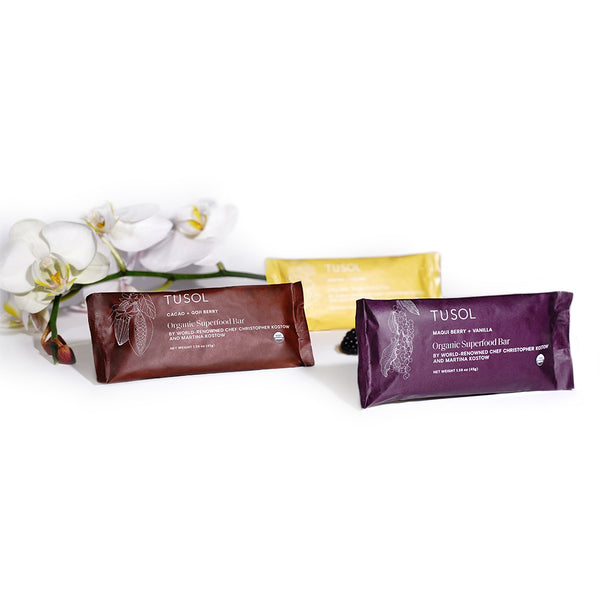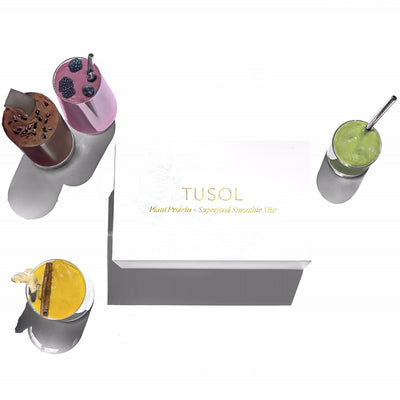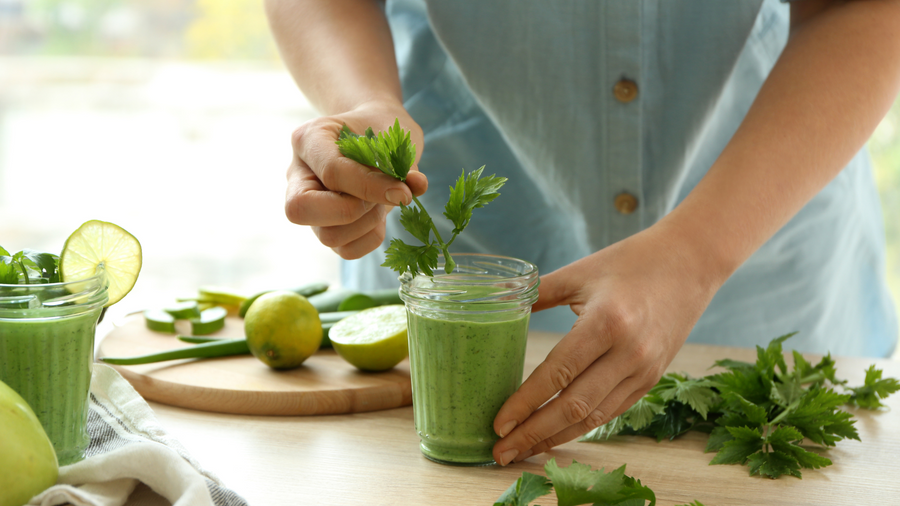What is oxidative stress?
The term oxidative stress refers to a phenomenon that occurs when there is an imbalance of free radicals and antioxidants in the body [3]. This imbalance is damaging and can result in an array of problems, such as advanced aging and chronic illness [4].Oxidative stress and inflammation
The link between oxidative stress and inflammation is significant. When antioxidants are overpowered in the body, they lose the ability to effectively fight off free radicals, and the body is sent into a state of oxidative stress [3]. Because of this, inflammation of the body ensues. Short-term oxidative stress regularly occurs within the body when it is fighting off an infection or an injury [6]. In this case, mild inflammation will occur, but will subside after the body has healed. The same process is triggered during exercise. Long-term oxidative stress, however, results in chronic inflammation that is damaging to the body. Oxidative stress leads to chronic inflammation and sustained inflammation increases the body’s production of free radicals [6]. This relationship leads to an unending and dangerous cycle if not disrupted. Chronic inflammation, like oxidative stress, is directly linked to several chronic diseases including cancer, diabetes, cardiovascular disease, and several neurodegenerative diseases [7].Oxidative stress and exercise
Exercise puts stress on the body. From weightlifting to running, participating in vigorous physical activity fatigues the muscles. It’s also believed exercise causes minor damage to the muscle fibers themselves (which, once repaired, results in improved strength over time). This fatigue induces oxidative stress, resulting in mild muscle inflammation and soreness [6]. Like mentioned above, oxidative stress of this nature is normal and temporary. Exercise should not be avoided despite the link to short-term oxidative stress. When practiced regularly, physical activity decreases the likeliness of experiencing long-term oxidative stress, which is harmful to the body [8].Oxidative stress and weight gain
Weight gain directly correlates with an increased production of free radicals in the body. Because of this, people with a Body Mass Index (BMI) in the overweight or obese range are more likely to enter into a state of oxidative stress than those with a BMI in the normal range. Overweight is categorized as having a BMI of 25-29.9, while obesity is categorized as having a BMI of 30 or higher. The Obesity Action Coalition defines obesity as “a disease that is associated with having an excess amount of body fat” [9]. This excess body fat, or adipose tissue, is the link between weight gain and oxidative stress [8]. Overweight and obesity induces inflammation in the body that is chronic and on-going, as long as the excess weight is sustained [8]. Chronic inflammation, as we already know, creates a state of long-term oxidative stress. Over time, this imbalance of free radicals causes further inflammation, which damages healthy cells and leads to various diseases. Weight management is therefore a vital component of combating oxidative stress.Diet and oxidative stress
A person’s diet can either be beneficial or detrimental to preventing oxidative stress. Either way, diet plays a significant role. Overconsumption of oxidized fats like canola oil, vegetable oil, and any refined oil that comes from a seed, legume, nut, or grain. Conventional animal-based products from animals that are fed a corn diet are also linked to an imbalance of free radicals and antioxidants in the body. This causes inflammation and the ability to regulate glucose. Inflammation hinders the cells’ ability to metabolize glucose not allowing glucose to go inside of the cell to be converted into energy but rather accumulating the glucose outside of the cell. To protect against oxidative stress, consumption of antioxidants is needed, that is in the form of fruits, teas, vegetables, and spices. Consuming a healthy diet is also essential for weight management, which also fights against oxidative stress. TUSOL Smoothies can help the body fight oxidative stress! This smoothie collection is filled with antioxidant-rich botanicals that combat oxidative stress, reduce the effects of aging, and work alongside vitamin C to stimulate healthy collagen production. Our REJUVENATE smoothie is especially formulated with superfoods high in polyphenols and antioxidants. Both chaga and maca contain enzymes that increase each other’s antioxidant potency, sesame seeds and tocotrienols together increase absorption of vitamin E, and sesame seeds and maca work together to balance hormones — all to leave you feeling your lightest and brightest. View our collection of smoothies here, and enter WELCOME20 to get $20 off your first order.Diseases caused by oxidative stress
Oxidative stress can be extremely harmful to the human body. When antioxidants are overpowered by excessive free radical production, the resulting state of oxidative stress causes chronic inflammation. Both the oxidative stress itself, as well as the inflammation, directly result in increased risk for various diseases [2]. These diseases include diabetes, cancer, heart disease, brain disorders like Parkinson’s or Alzheimer’s, and arthritis [2, 7].Oxidative stress and diabetes
Diabetes is one of the most prominent risks associated with sustained oxidative stress. In fact, research suggests that the primary cause of glucose intolerance in diabetics is high levels of long-term oxidative stress [5]. Not only does oxidative stress lead to diabetes, an overwhelming number of free radicals causes further diabetic complications as well. Like with inflammation, the relationship with oxidative stress and diabetes is circular. Oxidative stress can lead to diabetes, while effects of glucose intolerance lead to increased free radical production, leading to worsened diabetic conditions [5].Oxidative stress and cancer
Another significant risk of oxidative stress is cancer. When antioxidants lose the ability to effectively neutralize free radicals, the overabundance of free radicals results in cellular harm [7]. Cellular molecules like DNA, proteins, and lipids are attacked and damaged, and this damage causes mutations and transformations of molecules in the body. These mutations can lead to inflammation, tumor growth, and tumor survival [7].Free radicals and antioxidants
“A free radical can be defined as any molecular species capable of independent existence that contains an unpaired electron in an atomic orbital” [1]. In other words, free radicals are molecular compounds in the body known as reactive oxygen species (ROS). These reactive oxygen species have an unpaired electron in their outer orbit, leaving them extremely unstable and reactive [1]. Antioxidants, on the other hand, are molecules that inhibit oxidation in the body by donating electrons to free radicals (thus, neutralizing them) [4]. Both free radicals and antioxidants are naturally produced by the body, and a balance between both molecule types is necessary for various bodily functions.How to reduce free radicals in the body
Keep in mind that a certain number of free radicals in the body are vital for physiological function. However, too many free radicals in the body will result in oxidative stress. Luckily there are natural ways to prevent this damage. Free radicals in the body can be the result of two different causes. ROS production can either be caused by normal bodily processes or as a result of environmental factors [1]. To prevent overproduction of internally sourced free radicals, regular exercise and a healthy, well-rounded diet are key. Environmental factors to avoid include smoking cigarettes and breathing cigarette smoke, pesticides, an overabundance of x-rays, and air pollution [1].Supplement to fight free radicals
To protect against oxidative stress, a person needs an adequate amount of antioxidants in the body to keep free radical production at bay. Some antioxidants are produced naturally within the body, while others need to be supplemented with diet [1]. Antioxidants the body cannot make itself are Vitamins E, C, and B [1]. To fight free radicals, a person should be sure to eat foods rich in all three. Foods that contain a lot of antioxidants include most berries, citrus, vegetables such as cauliflower, spinach and artichokes, and, good news, dark chocolate! [11]. Another natural option to ensure antioxidant levels are high enough is through medicinal plants. “It has been reported that there is an inverse relationship between dietary intake of antioxidant rich food and medicinal plants and the incidence of human disease” [1]. Possible plants to consider incorporating into your diet are ginger, green tea, cinnamon, turmeric, aloe vera, and garlic [1]. These plants are fairly easy to find in a local supermarket and all provide the body with antioxidants. There are also many more medicinal plants rich in necessary antioxidants, this list is not exhaustive! We’ve compiled our favorite recipes that are packed with ingredients rich in antioxidants to help fight and prevent oxidative stress. You can download a free copy below by clicking on the book image. Or by clicking here.Each of these dishes are simple, ready in less than 15 minutes, and contain only the healthiest functional ingredients.
Can free radical damage be reversed
Free radical damage can create serious health problems, so can it be reversed? Research suggests that exercise and a healthy diet can mitigate some of the damage caused by oxidative stress [4]. However, it’s believed that some damage caused by free radicals might be irreversible [2]. Ultimately, more research is necessary. Because of this, the best cause of action is to prevent oxidative stress and free radical damage before it happens! This means eating diets rich in antioxidants, as well as other foods that promote overall health, participating in physical activity regularly, and avoiding environmental harms such as cigarette smoke and pesticides. Citations- https://www.ncbi.nlm.nih.gov/pmc/articles/PMC3249911/
- https://www.ncbi.nlm.nih.gov/pmc/articles/PMC2724665/
- https://www.ncbi.nlm.nih.gov/pubmed/10693912
- https://www.ncbi.nlm.nih.gov/pmc/articles/PMC2684512/
- https://www.ncbi.nlm.nih.gov/pmc/articles/PMC1448694/
- https://www.hindawi.com/journals/omcl/2016/7432797/
- https://www.ncbi.nlm.nih.gov/pmc/articles/PMC2990475/
- https://www.ncbi.nlm.nih.gov/pmc/articles/PMC4307252/
- https://www.obesityaction.org/get-educated/understanding-your-weight-and-health/what-is-obesity/
- https://www.hindawi.com/journals/omcl/2018/9719584/
- https://www.heathline.com/nutrition/foods-high-in-antioxidants#section1














